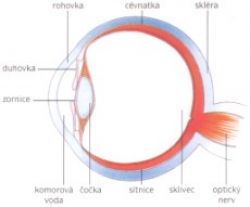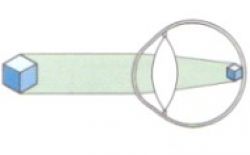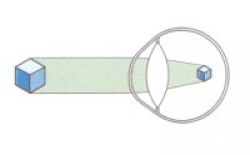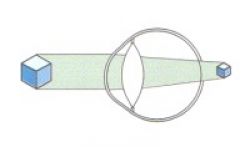Most frequent eye refractive defects
The human eye is the organ which gives us the sense of sight, allowing us to
observe and learn more about the surrounding world than we do with any of the
other four senses. We get up to 80% of all information through sight.
The sense organ of sight is an eye (oculus), which is composed from the eyeball
and accessory organs. The light sensitive layer – the retina contains light
sensitive specialized cells – the rods and cones.
The perfection of visual perception is provided by essential parts of the eye
forming optical system (cornea, aqueous humor, lens, vitreous body). The process
of vision begins when light rays that reflect off objects and travel through the
eye's optical system are refracted and focused into a point of sharp focus.
A more detailed description of the eye you can find for example in the Wikipedia article about the eye.
_________________________
Eye with no refractive defect is called emetropic eye. Eye lens
protrudes and flattened, depending on the distance of the observed objects using
the system of the eye sharp image on the retina where the nerves transmit
information to the brain.


The most common eye defects
Myopia
Can be characterized as a defect caused by physiologically too big axial length of the eye. People with this defect can see clearly at a small distance, but not sharply at a distance and they are looking into the distance trying to squint. This eye defect is corrected by glasses with minus dioptries, to bring back the image on the retina.
Hypermetropia
Can be characterized as a defect caused by physiologically too small axial length of the eye. People with this defect can´t see at a small distance and also at a distance. Some people will do just focus into the distance, but only at the cost of great effort and inadequate follow-up fatigue. Correct the farsightedness diopter glass with a plus to bring back the image on the retina. Hypermetropia is corrected by plus dioptries.
Presbyopia
It is a natural process of aging eye on everyone around forties. The lens in
the eye begins to lose its elasticity, poorly protrudes, making it very
difficult accommodation. It follows the constantly worsening near vision.
Presbyopia is corrected with adding the plus dioptries to the current
correction.
Currently the best method for correcting presbyopia is wearing multifocal lenses.
Astigmatism
This defect causes inaccurate eye focus on the retina. The cornea does not
have a regular spherical shape, but is irregularly curved.
Astigmatism often occurs along with nearsightedness or farsightedness.
Astigmatism is corrected by cylindrical lenses. Orientation of the cylinder is
determined by degrees.
The other vision defects include amblyopia, hidden strabismus, etc.

